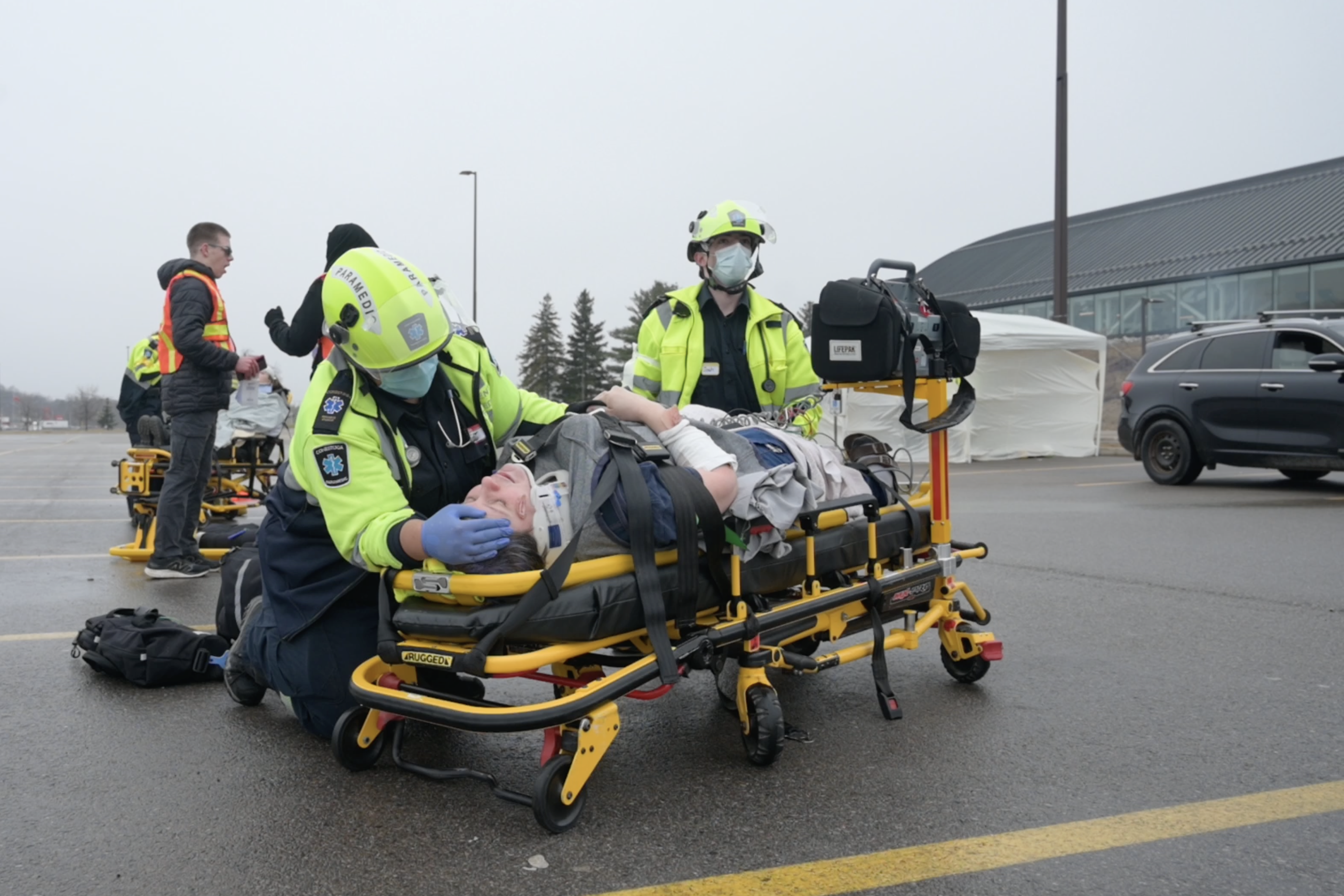Conestoga students in several Health Sciences and Community Services programs joined an interprofessional simulation to gain invaluable experience responding together to a complex situation with multiple casualties.

Students in several Health Sciences and Community Services programs joined an interprofessional simulation to experience responding to an emergency situation with multiple casualties.
The simulation was organized by Conestoga’s WIHSC (Waterloo Interprofessional Health and Community Student Collaborative), a student-led organization promoting interprofessional education and collaboration, and supported by faculty and community.
“They just fully immersed themselves into that scenario. They acted like it was real life and that’s what it looked like,” said Kyla Rotobilsky, manager of Simulation & Learning Innovation in the School of Health & Life Sciences.
About 75 students participated in the exercise held on March 29, including those from programs such as Nursing, Paramedic, Pre-Service Firefighter, Respiratory Therapy, Protection, Security and Investigations, and Police Foundations.
The simulation started with two vehicles in a collision, followed by an altercation between occupants. Student paramedics, police, security and firefighters responded to the scene, where they encountered injuries from the crash and medical emergencies that included a pregnant passenger going into labour and another with chest pain. Those requiring medical care were transported by ambulance to a hospital-like setting, where the students provided necessary care including resuscitation and intubation practised on high-fidelity mannequins.
WIHSC president Sebastian Nitz thanked all the professors who helped make the simulation a success by providing students with a situation that was as close to the real world as possible.
“It was an amazing experience to watch the students adapt to the new dynamic of working with other professionals. Each participant had an idea of what they thought was a priority and brought a specific skill set to the table to deal with the scenario,” Nitz said.
“As the simulation unfolded, students were forced to adapt their practice to better work together as a team instead of independently. Our goal at WIHSC is just that - to promote interprofessional collaboration so that students are better prepared for the real world.”
Allied Health & Life Sciences professor Pamela Hall was impressed by the teamwork displayed.
“It was clear that the students who volunteered as participants were very comfortable in their professional roles. What was interesting was how they collaborated in a real-time event where the situations were complex and where there was overlap in their scopes of practice. They explored challenges associated with task prioritization, overcoming barriers to communication, and how to promote continuity of care with evolving situations,” Hall said.
Karl Weiss, professor in the Respiratory Therapy program, looked after the briefings before and after to ensure students, who were from many different programs and at different levels in their training, were able to learn together.
The students were engaged, supportive and motivated, especially given they were volunteering their time on a Saturday morning, Weiss said. The debrief explored the simulation’s objectives, which were focused on interprofessional communication in managing multiple patients from the scene to hospital.
“There was excellent collaboration among the different groups in managing a complex dynamic scene outside which enabled a proper triage of patients to the hospital. In the hospital, each team worked well together in two rapidly evolving medical emergencies. In both outside and inside the hospital, students were able to share profession-specific language and responsibilities with each other which boosted interprofessional awareness,” Weiss said.
“I was very proud of how respectful and supportive the students were of each other in their learning.”
Weiss added: “Even the actors that played patients had a lot of positive feedback for the respect and attention they received through the process.”
Conestoga’s School of Health & Life Sciences offers a range of credentials to become a health-care professional, from pre-health programs through to certificates, diplomas, graduate certificates and degrees delivered in the most up-to-date training provided by expert faculty and staff in state-of-the-art facilities.
The School of Community Services is a leader in translating students’ passions for working with people and making a difference in community into successful careers in human services and community safety. The career-ready graduates are well-prepared to address real-world needs and make a difference in today’s rapidly changing world.
